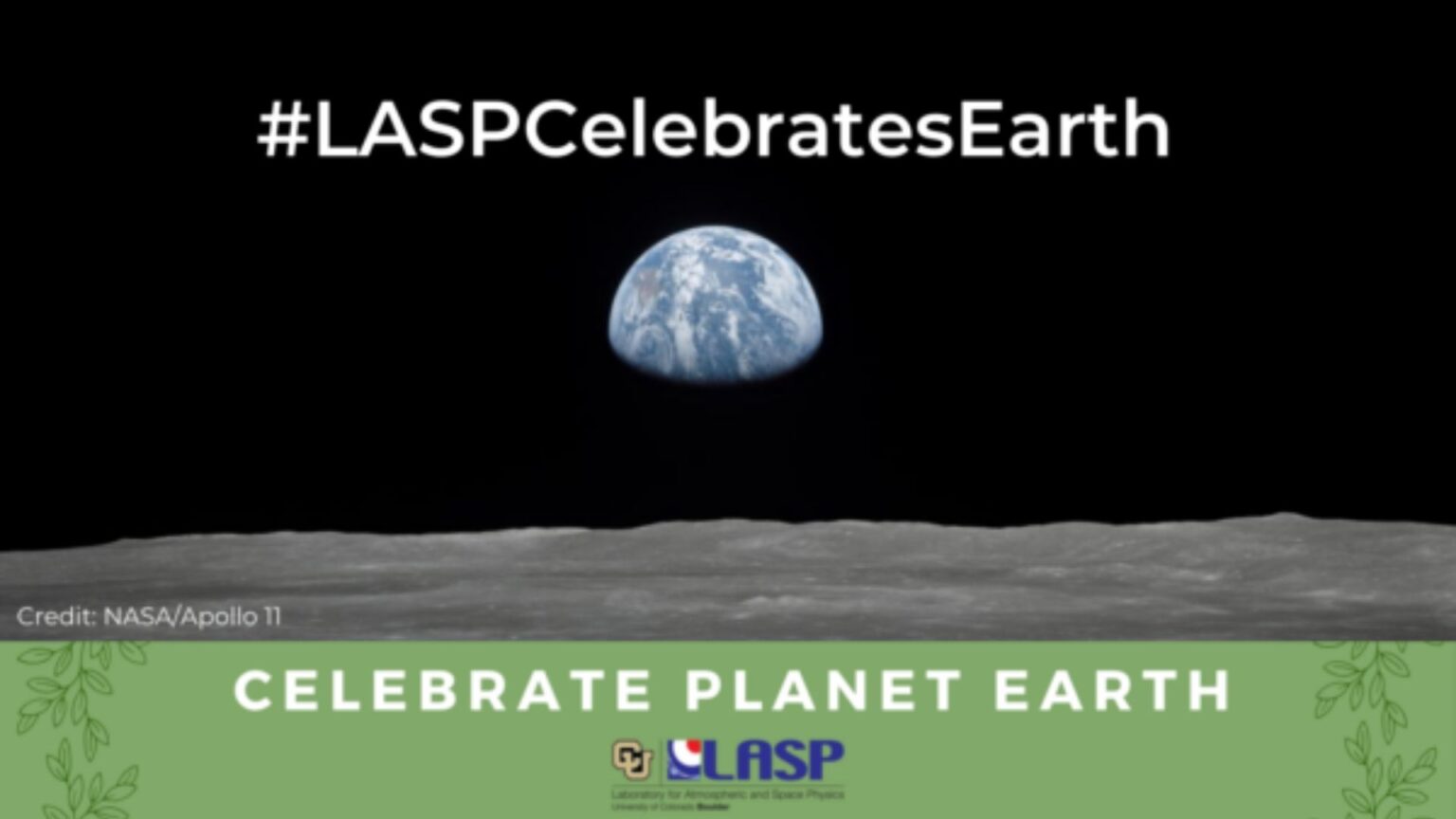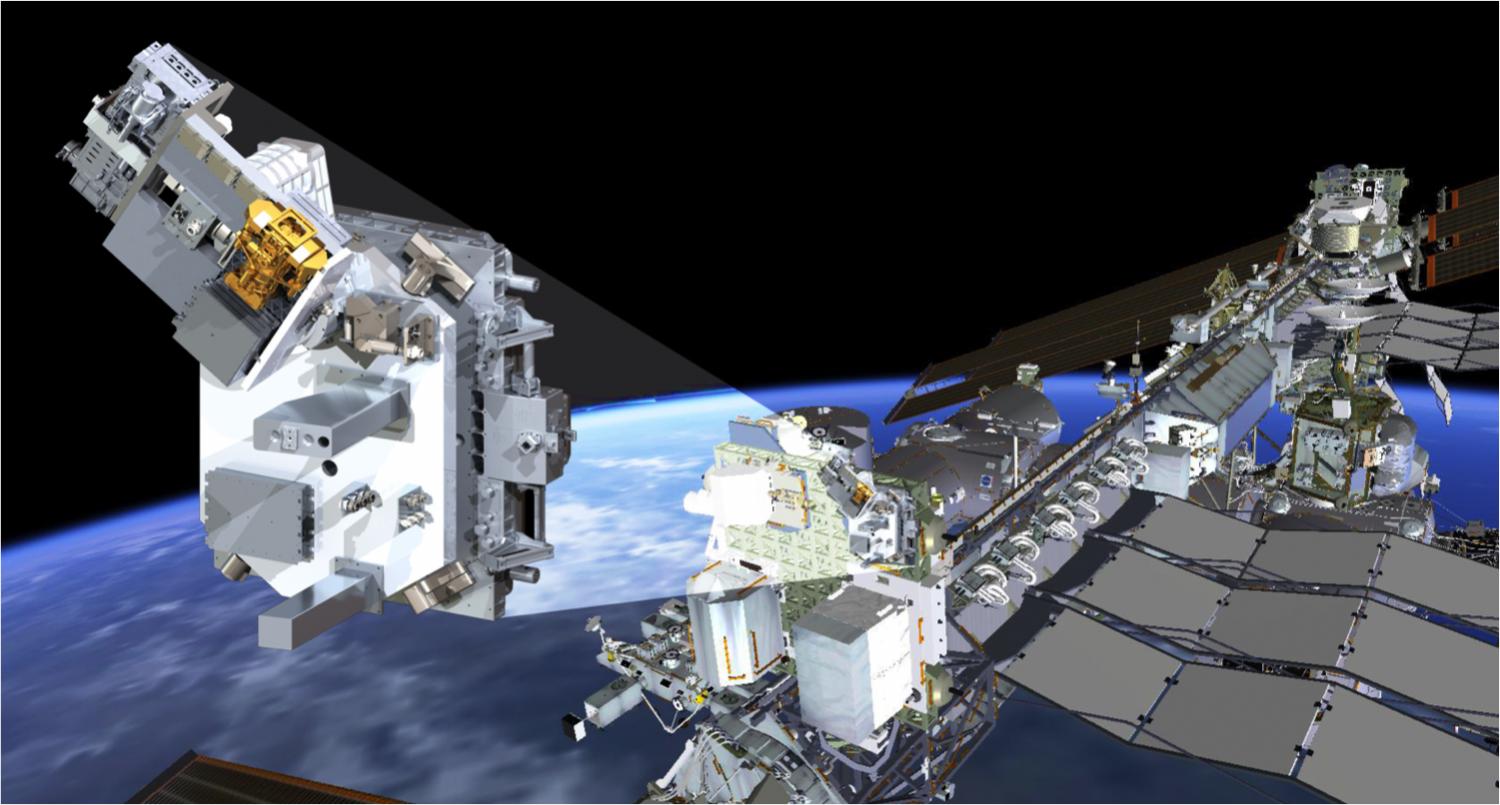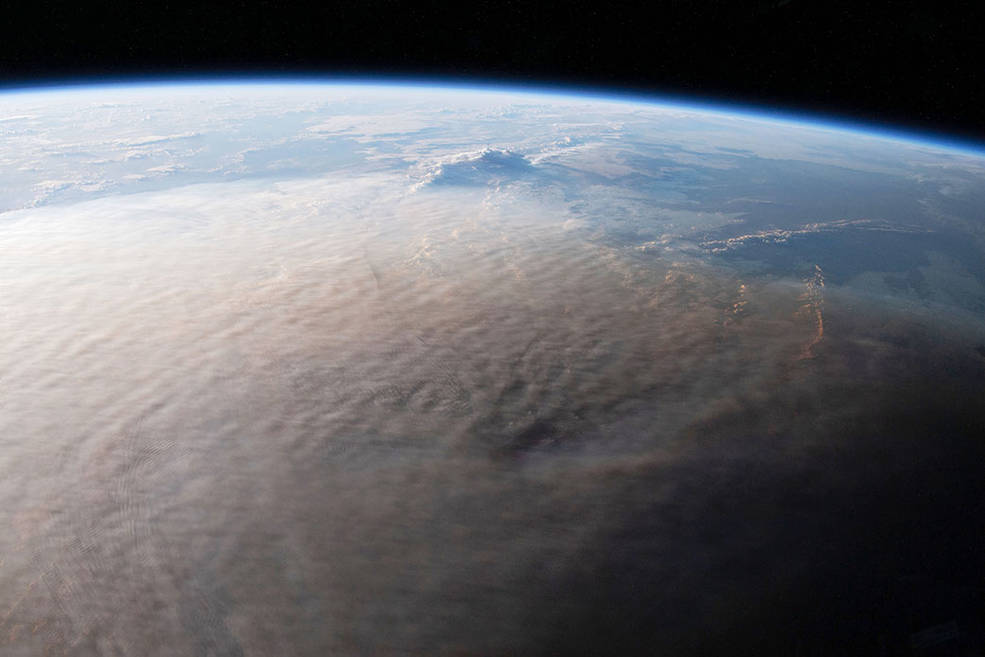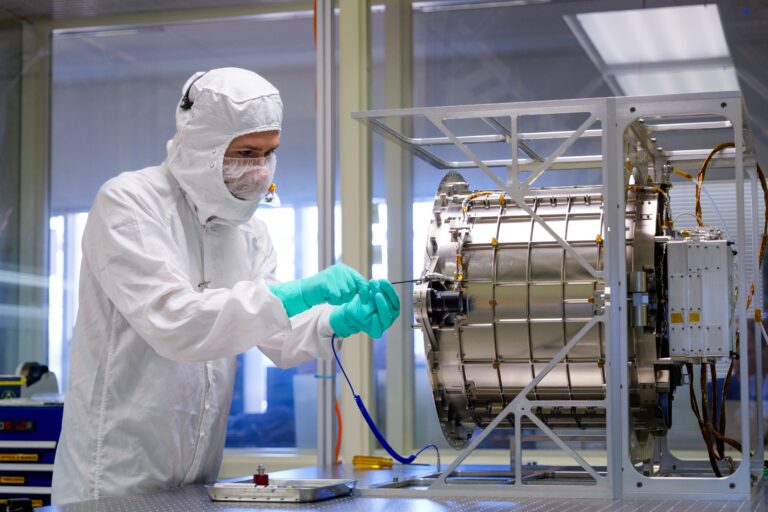
Despite humans inhabiting Earth for around 300,000 years, we still have much to learn about the beautiful planet we call home. Yet only so much can be learned about Earth from the ground, prompting scientists to seek a view of Earth and its stellar neighborhood from above and beyond.
Since its founding in 1948, the Laboratory for Atmospheric and Space Physics (LASP) at the University of Colorado Boulder has become a leader in climate and atmospheric science, producing an array of missions and instruments whose coverage ranges from the Earth’s surface to the sun’s orbit.
In celebration of Earth Day, we’re featuring 9 ways that LASP is advancing crucial Earth and climate research:
1. Earth’s radiation budget: Our climate is controlled by how much sunlight is being absorbed by Earth and how much energy, in turn, is being emitted into space. These two quantities, and the difference between them, determine Earth’s radiation budget (ERB). The LASP-built instruments of the Libera mission—set to launch in 2027—will record just how much energy leaves our planet’s atmosphere on a day-by-day basis, providing key information about how Earth’s climate is evolving over time.
2. Solar irradiance: The amount of solar radiation, or power, that reaches Earth’s atmosphere from the sun is known as solar irradiance and is one of the key factors in Earth’s radiation budget. It finds itself as one of the longest continuous climate records from space. Various space-borne instruments measure these levels, including the Total and Spectral Solar Irradiance Sensors: TSIS-1, currently operating on the International Space Station, and the upcoming TSIS-2—both of which were engineered at LASP using its world-class calibration facilities. Additionally, LASP collaborates with the National Institute of Standards and Technology (NIST) to develop new irradiance and radiance standards.

3. Reflected radiation: When solar irradiance reaches Earth, some of that energy is reflected back from the surface—this is what is known as reflected radiation. The Climate Absolute Radiance and Refractivity Observatory Pathfinder (CLARREO-PF) mission will take highly accurate measurements of sunlight reflected by the Earth and moon. The instrument that will make that possible is the Hyperspectral Imager for Climate Science (HySICS), which is being built at LASP and is nearly ready for delivery. HySICS will take measurements that are five to ten times more accurate than current observations, making it possible to detect Earth’s subtle climate change trends decades sooner.
4. Solar reference spectrum: The solar reference spectrum is a detailed chart of the intensity of solar radiation across various wavelengths, providing a standard to compare how it behaves in Earth’s atmosphere and in space. The Hybrid Solar Reference Spectrum (HSRS) is a highly accurate, composite spectrum based on direct measurements by LASP’s Total and Spectral Solar Irradiance Sensor (TSIS-1) Spectral Irradiance Monitor (SIM) instrument. Knowing the solar reference spectrum helps scientists understand how solar energy affects Earth’s climate.
5. Earth’s atmospheric layers: Earth has five major atmospheric layers, the complex properties, dynamics and interactions of which pose many scientific questions for LASP researchers. The thermosphere, which lies below the region in which satellites orbit and where the Northern Lights are generated, is one such layer. The thermosphere also features gravity waves, which the Dynamics Atmospheric Global Connection (DYNAGLO) mission—set to launch late next year—will measure and study.

6. Noctilucent clouds: For centuries, rare night-shining clouds have formed high in the atmosphere above Earth’s poles each summer. Recently, however, they’ve been spotted more frequently and at lower latitudes. LASP scientists are leading contributors to NASA’s Aeronomy of Ice in the Mesosphere (AIM) mission, which aimed to understand why these clouds form and how they relate to climate change. Changes observed in the characteristics of these clouds may be related to anthropogenic effects on the atmosphere. Although AIM’s 16-year-long primary mission ended recently, it provided gigabytes upon gigabytes of data to study that keep researchers busy for years to come.
7. Polar vortex: LASP scientists study the winter polar vortex, a swirling circulation in Earth’s stratosphere and mesosphere known to impact weather patterns at the surface. Weakening of the polar vortex is associated with cold-air outbreaks at the surface, and the strength of the vortex is also connected to variations in the thermosphere and ionosphere. For these reasons, it is important to know how the vortex will change in a warming climate.

8. Hunga Tonga eruptions 2022: In December 2021, a subsurface volcano began to erupt on Hunga Tonga, culminating in a cataclysmic eruption a month later. Since then, scientists at LASP have been unraveling both the short- and long-term impacts of the eruption, which range from the depths of the seafloor to the ionosphere.
9. Using Earth to study other planets: There are numerous places and events on our planet that can teach us not only about life’s history here, but also about the conditions under which it might occur elsewhere. Many Earth ecosystems can offer valuable insights into other possibly habitable worlds. Late last year, LASP scientists discovered an ecosystem high above sea-level in Argentina: salt plains surrounding a complex system of lagoons. In these lagoons, larger-than-normal stromatolites are growing—a surprise even to the scientists themselves. Stromatolites are ancient structures—formed by layers of microbes, often resembling rocky mounds—that can hopefully provide insight into early life on Earth, and possibly, Mars.
By Emma Opper, Science Writer
Founded a decade before NASA, the Laboratory for Atmospheric and Space Physics at the University of Colorado Boulder is on a mission to transform human understanding of the cosmos by pioneering new technologies and approaches to space science. LASP is the only academic research institute in the world to have sent instruments to every planet in our solar system. LASP began celebrating its 75th anniversary in April 2023.


